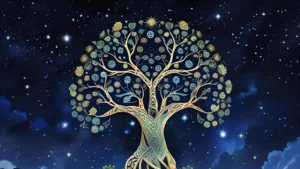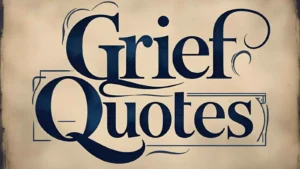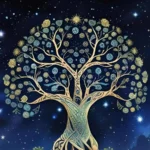The Tree of Life is more than a beautiful visual symbol — it’s a living, breathing idea that transcends time, culture, religion, and even science.
From ancient mythology to quantum biology, this symbol carries universal messages of connection, growth, immortality, and inner wisdom. But what does it truly mean in today’s world?
In this comprehensive article, we’ll explore the evolution, spiritual significance, and modern relevance of the Tree of Life.
We’ll also help you understand its deeper meanings across different cultures and how you can apply these interpretations in your daily life — in personal reflection, in art, or even in conversations.
🌍 Origins of the Tree of Life: Rooted in Ancient Civilizations
The Tree of Life has appeared independently across the globe in some of humanity’s oldest known mythologies. Whether it was etched into stone tablets or spoken of in oral stories, it always symbolized the interconnectedness of all life.
In Mesopotamia
The earliest known depictions come from Sumerian tablets dating back to 2500 BCE. The Sumerians visualized it as a cosmic axis that connected the heavens, Earth, and underworld — the bridge between gods and humans.
In Egypt
The ancient Egyptians believed in a Tree of Life that grew from the sacred waters of Nun, the primordial source. The god Osiris was associated with this tree, symbolizing rebirth and eternal life.
In Norse Mythology
The Yggdrasil, an immense ash tree, was the Norse Tree of Life. Its branches reached the heavens, and its roots ran deep into various realms — a representation of interdimensional reality and the eternal cycle of life and death.
In Celtic Culture
The Celts saw trees as sacred entities. Their Tree of Life, or Crann Bethadh, stood for balance, harmony, and the continuity of generations. Trees were believed to house ancestors and act as protectors.
🌱 Spiritual Symbolism: What the Tree of Life Really Represents
Across all these interpretations, there are five core meanings embedded in the symbol of the Tree of Life:
1. Interconnectedness
All beings — humans, animals, plants — are branches from the same cosmic tree. It reflects the idea that we are not isolated entities but deeply connected through nature, energy, and consciousness.
2. Growth and Transformation
Trees begin as seeds. As they grow upward, they also root deeper. The metaphor is clear: growth comes from balance — expanding yourself while grounding in values and experience.
3. Resilience and Strength
Like a tree weathering storms, we too endure hardships. The Tree of Life reminds us that challenges are part of our path, and they help shape who we become.
4. Immortality and Rebirth
Many cultures associate the tree with eternal life. It sheds its leaves but regrows them, symbolizing the cycle of death and rebirth — both physical and spiritual.
5. Wisdom
A tree silently observes the world. With time, it becomes a symbol of ancient wisdom, reminding us to listen, learn, and grow patiently.
🧘 Modern-Day Meanings: Why the Tree of Life Still Matters in 2025
In today’s fast-paced world, the Tree of Life is more than a spiritual relic. It has evolved into a tool for personal reflection, mental wellness, and even digital connectivity.
In Psychology
Therapists use the “Tree of Life” as a narrative therapy tool — clients map their life’s journey as roots (heritage), trunk (present self), branches (aspirations), and leaves (support system).
In Technology
The symbol has entered discussions in artificial intelligence and network theory, where neural trees and knowledge graphs emulate organic growth and branching logic.
In Everyday Life
People tattoo it on their skin, wear it as jewelry, or paint it on canvas — as a reminder of personal evolution, resilience, and unity.
🕊️ Tree of Life in World Religions
The Tree of Life appears in nearly every major religion, often as a symbol of divine connection and eternal truth.
Christianity
Mentioned in Genesis and Revelation, the Tree of Life stands in Eden as a divine source of eternal life, contrasting with the Tree of Knowledge.
Judaism
The Kabbalistic Tree of Life is a mystical diagram consisting of ten Sefirot (emanations), representing the divine attributes of God and the path to spiritual enlightenment.
Islam
In the Quran, the Tree of Immortality is mentioned in the context of Adam and Eve, symbolizing divine secrets and the hidden knowledge of eternity.
Buddhism
While not called the “Tree of Life,” the Bodhi Tree, under which the Buddha attained enlightenment, represents a spiritual awakening and release from suffering.
🎨 Artistic and Cultural Interpretations
Throughout centuries, artists have reimagined the Tree of Life in manuscripts, mosaics, tapestries, and jewelry. Today, it thrives in tattoos, brand logos, book covers, and digital art.
- Gustav Klimt’s Tree of Life: A swirling Art Nouveau masterpiece representing unity and the spiritual.
- Indigenous motifs: Native cultures use trees to narrate ancestry and origin myths.
- Modern minimalism: Clean geometric representations now symbolize sustainability and spiritual simplicity.
📚 Tree of Life in Science and Philosophy
Interestingly, science also uses the “Tree of Life” metaphor to explain biological evolution.
Darwin’s Evolutionary Tree
Charles Darwin coined the “Tree of Life” in his 1859 Origin of Species, illustrating the common descent of all life forms. This is now visualized in phylogenetic trees in biology.
Quantum Biology (2025 View)
In 2025, new studies in quantum consciousness suggest that life’s evolution may be interconnected on subatomic levels, reinforcing ancient beliefs in unseen connections — a fascinating bridge between spirituality and modern science.
💬 10 Thoughtful Expressions Inspired by the Tree of Life 🌿
Use these expressions in text messages, letters, or conversations — from poetic to professional:
- “May your roots grow deep and your branches reach the sky.”
A poetic way to wish someone resilience and ambition. - “You’re part of something greater — like a leaf on a sacred tree.”
Spiritual and grounding for someone going through a tough time. - “Grow through what you go through — like the Tree of Life itself.”
A motivational message with depth. - “May your life branch in beautiful directions.”
Ideal for graduations or new beginnings. - “You carry the strength of ancient trees within you.”
A compliment with emotional gravity. - “Your story adds a new leaf to the world’s tree.”
Great for acknowledging someone’s impact. - “Let your roots remind you where you come from.”
For reflection or reconnecting with culture. - “Even in stillness, you’re growing like a silent tree.”
Perfect for someone on a spiritual or healing journey. - “The Tree of Life doesn’t rush — and neither should you.”
A reminder to slow down and trust the process. - “We’re all branches of the same tree — more connected than we realize.”
A message of unity and compassion.
🤝 When to Use These Expressions
- Professional Settings: Use carefully phrased versions (e.g., “May your journey grow strong roots”) in farewell emails or team messages.
- Casual Conversations: Share quotes like “Grow through what you go through” in texts or social media posts.
- Spiritual Messages: Great for journaling, meditations, or as affirmations.
- Art and Tattoos: Many people now incorporate such lines into personal art or symbolic tattoos in 2025.
💡 Why the Tree of Life Resonates in 2025 More Than Ever
In an age of digital overload, social fragmentation, and environmental crisis, the Tree of Life reminds us of:
- Unity in diversity
- The power of personal and spiritual growth
- Our connection to nature, history, and each other
It’s no longer just a spiritual or religious symbol — it’s a cultural compass, guiding people toward authenticity, wholeness, and meaning.
Final Thoughts 🌟:
The Tree of Life isn’t just a myth, metaphor, or tattoo design. It’s a living philosophy. In its roots, we find heritage. In its trunk, our strength. In its branches, endless possibility.
No matter who you are or where you’re from, the Tree of Life is a reminder that your story is part of something greater — and it deserves to grow.










